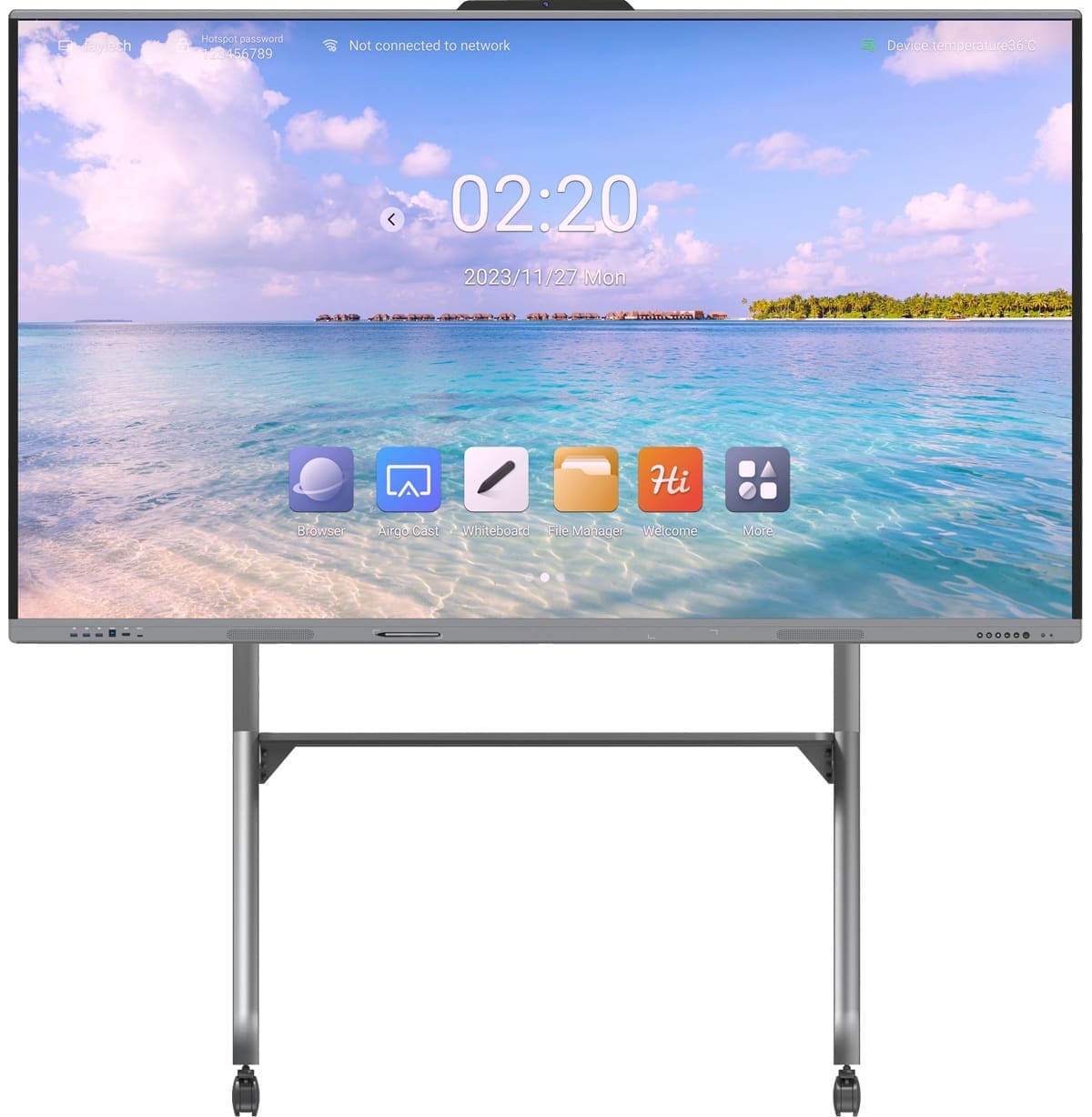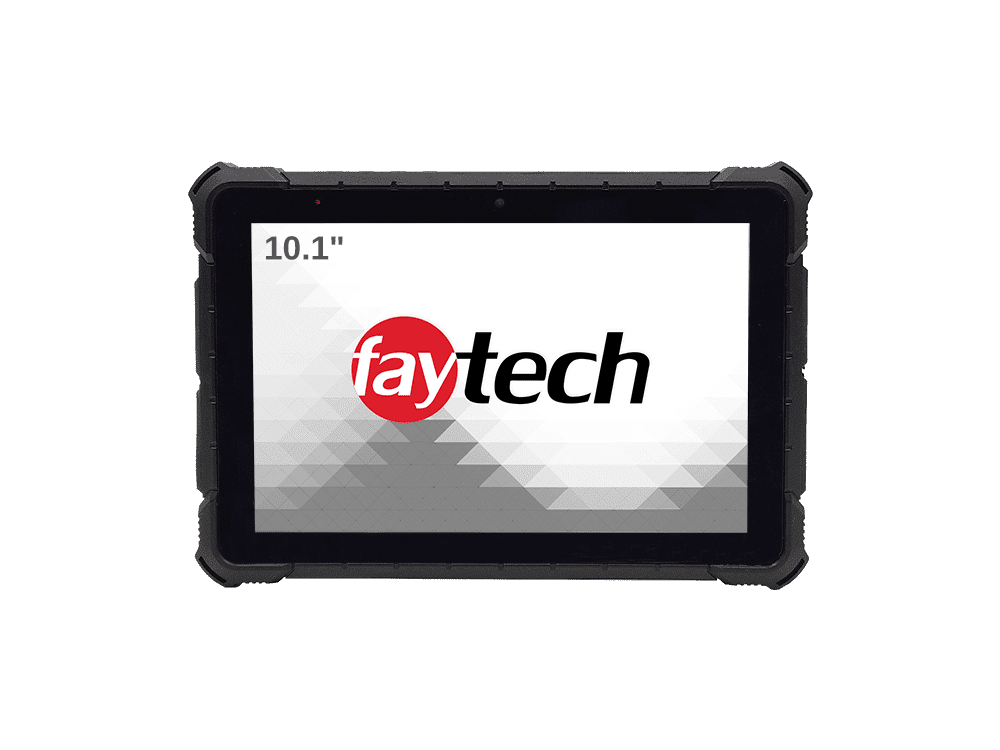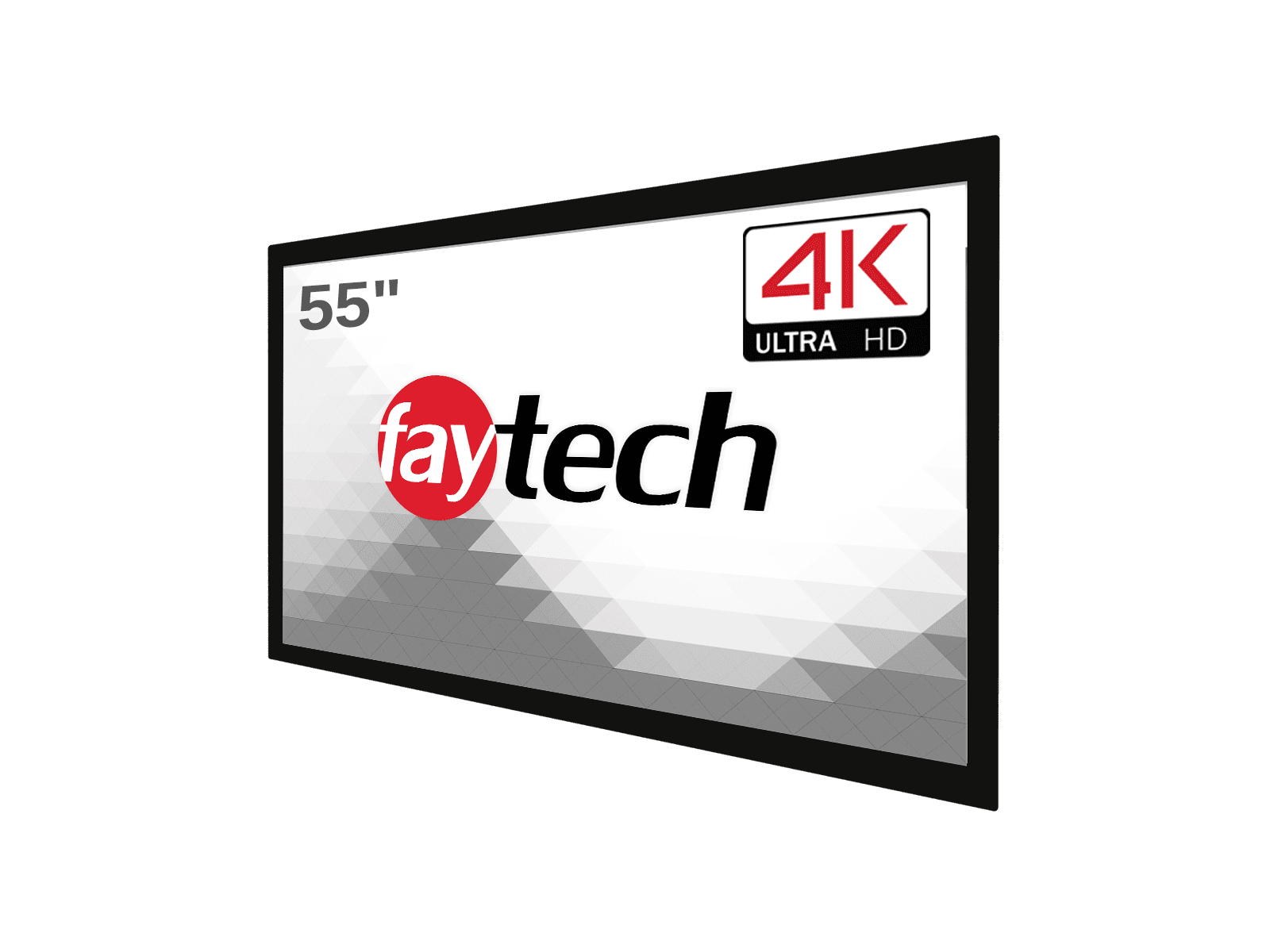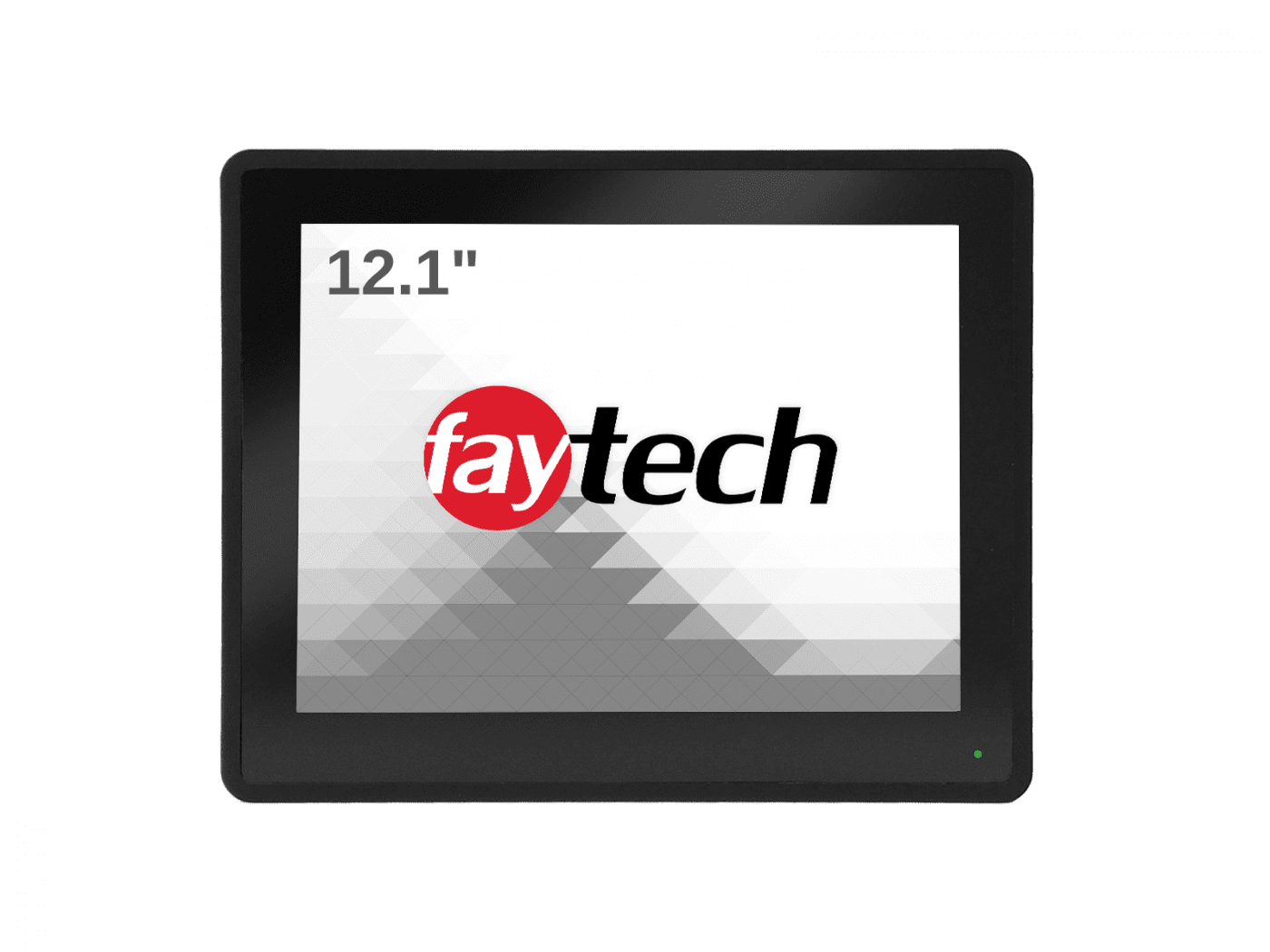
Touch Screen Design & Manufacturing
Faytech North America is a touch device manufacturer for retail, commercial and industrial touch screen solutions.

faytech
touchscreen solutions
researched | developed | & designed in Germany
CAPACITIVE
TOUCH
10-finger multi-touch | anti-glare surface | HD visual options | IP65 dust & waterproof | 2 year guarantee
RESISTIVE
TOUCH
fanless silent operation | robust components | VESA 75/100 mounting | LED backlights | 2 year guarantee
Touch Screen Monitors
- capacitive touch
- resistive touch
- ip65 touch
- portable touch
- open frame touch
- 2 year guarantee
Touch Screen PCs
- capacitive touch
- resistive touch
- ip65 touch
- embedded touch
- 2 year guarantee
Find exactly what you’re looking for…
OEM SOLUTIONS
Customized Integration | Cost Efficiency | Seamless Compatibility
Kastus
Anti-Viral
Anti-Microbial
Coating
Anti-Glare (Chemical Etching) | UV Coating | IR Coating | Anti-Fingerprint Coating
Interactive
Whiteboard
20-Point Touch Functionality | Simple & Easy Installation | High Resolution | Easy Video Conferencing
Our Clients





What We Do

Development
Scalable and flexible hardware platforms.

Manufacturing
Cutting-edge production for innovative solutions.

Logistics
Distribution, warehousing, inventory, and imaging.

Support
Global network for rapid and responsive support.
More Information
Features and Benefits of faytech’s Touch Screen Technology
faytech North America is a leading touch screen manufacturer that offers an impressive range of high-quality touch screens with exceptional durability and reliability. Their products are specifically designed to withstand the harshest environments, making them ideal for industrial use. Let’s delve into the features and benefits that set faytech North America apart from other manufacturers in the market.
Durability and Reliability of faytech’s Touch Solutions
One of the standout features of faytech North America’s touch screens is their unparalleled durability. These screens are built to last, ensuring longevity even in demanding conditions. Whether it’s extreme temperatures, dust, moisture, or vibrations, faytech touch screens can handle it all. This makes them perfect for industrial settings where ruggedness is crucial.
Touch Screens Suitable for Industrial Use
faytech North America understands the unique requirements of industries such as manufacturing, logistics, and automation. Their touch screens are meticulously engineered to meet these demands. The robust construction ensures resistance against accidental impacts or rough handling that can occur in busy industrial environments.
Advanced Touch Technologies for Evolving Organizations
faytech North America takes pride in offering touch screens equipped with advanced technologies that provide accurate and highly responsive touch capabilities. With their capacitive touch technology, users can enjoy precise control with just a gentle tap or swipe on the screen. This level of accuracy is essential for applications where precision matters most.
Versatile Applications of Touchscreen Systems
The versatility of faytech touch screens opens up endless possibilities across various industries and sectors. From interactive kiosks in retail settings to control panels in manufacturing facilities, these touch screens seamlessly integrate into different applications. They are also compatible with various operating systems like Windows, Android, and Linux.
Customization Options for Interactive Touch
To cater to diverse customer needs, faytech North America offers customization options for their touch screens. This allows businesses to tailor the displays according to specific requirements such as size, resolution, brightness, and connectivity options. With this flexibility, faytech ensures that their touch screens can be seamlessly integrated into any project.
User-Friendly Interface for Commercial Touch Interfaces
faytech’s touch screens are designed with the user in mind. The intuitive interface makes it effortless for individuals to interact with the displays, regardless of their technical expertise. This ease of use enhances productivity and efficiency in various applications, whether it’s for data input, navigation, or interactive presentations.
Exploring Different Types of Touch Screens
Capacitive Touch Screens
Capacitive touch screens are a popular choice in the world of touch screen technology. These screens utilize electrical properties to detect touch, offering precise input recognition. The capacitive touch panels are designed with a layer of conductive material that responds to the electrical charge from our fingers. This type of touch screen provides a smooth and seamless user experience, allowing for effortless navigation and interaction.
One key advantage of capacitive touch screens is their ability to support multi-touch gestures. This means you can use multiple fingers simultaneously to zoom, rotate, or swipe on the screen. Whether you’re scrolling through web pages or playing games, capacitive touch screens enhance your overall experience by providing intuitive and responsive controls.
Another benefit is that capacitive touch screens can be found in various screen sizes, making them suitable for different applications. From small handheld devices like smartphones and tablets to larger flat panel monitors used in public kiosks or interactive displays, these screens offer versatility in terms of size options.
Resistive Touch Screens
Resistive touch screens operate on a different principle compared to their capacitive counterparts. They use pressure-sensitive layers to register input from fingers or styluses. When you apply pressure on the screen surface, the layers make contact and create an electrical connection that triggers an action.
One advantage of resistive touch screens is their compatibility with different types of styluses and even gloved hands. This makes them ideal for industrial environments where users may need to wear protective gear while operating the device.
While resistive touch screens may not provide as refined an experience as capacitive onesThey still offer precise control for single-point interactions. These screens are commonly found in applications such as point-of-sale systems, GPS devices, and other devices where accuracy is crucial.
Infrared Touch Screens
Infrared (IR) touch screens employ infrared light beams to detect touches on the screen surface. These screens consist of an array of sensors that emit and receive infrared light. When a touch occurs, it interrupts the infrared beams, allowing the system to determine the exact location of the touch.
One advantage of infrared touch screens is their durability. Since there is no physical contact with the screen, they are less prone to wear and tear compared to other types. These screens can support multi-touch gestures and provide accurate input recognition.
Infrared touch screens find applications in various industries, including gaming, interactive digital signage, and education. Their wide range of usage stems from their ability to deliver reliable and responsive touch experiences across different environments.
Advancements in Touch Screen Technology
Touch screen technology has come a long way in recent years, revolutionizing the way we interact with devices and opening up new possibilities for innovation. From multi-touch capabilities to haptic feedback technology, these advancements have greatly enhanced the user experience.
Multi-touch capabilities allow users to perform gestures like pinch-to-zoom or swipe effortlessly.
One of the most significant advancements in touch screen technology is the introduction of multi-touch capabilities. Gone are the days of single-point touch screens that restricted users to simple taps and clicks. With multi-touch, users can now perform complex gestures like pinch-to-zoom or swipe effortlessly, making interactions with touch screens more intuitive and natural.
Imagine being able to zoom in on a map by simply pinching your fingers together or swiping through a photo album with ease. These gestures have become second nature to us thanks to the widespread adoption of multi-touch technology in smartphones, tablets, and other touch screen devices.
Haptic feedback technology provides tactile sensations, enhancing the user’s touchscreen experience.
Another exciting advancement in touch screen technology is haptic feedback. This innovative feature adds a whole new dimension to the user’s touchscreen experience by providing tactile sensations when interacting with the display. By simulating physical feedback through vibrations or subtle movements, haptic feedback makes touch screens feel more responsive and engaging.
For example, when typing on a virtual keyboard, haptic feedback can replicate the sensation of pressing physical keys, giving users a sense of confirmation with each keystroke. This not only improves typing accuracy but also creates a more satisfying user experience overall.
Gesture recognition enables intuitive control by recognizing specific hand movements or gestures.
Gesture recognition is yet another breakthrough in touch screen technology that has transformed how we interact with devices. By analyzing specific hand movements or gestures made by users, gesture recognition allows for intuitive control over various functions and applications.
Think about waving your hand in front of a touch screen to answer a call or swiping your hand across the screen to change a song. These gestures have become synonymous with touch screens, enabling users to navigate through menus, control multimedia playback, and perform other actions effortlessly.
Customized Touch Solutions for Specific Applications
Touch screen manufacturers play a crucial role in providing tailored solutions for various industries. From healthcare to retail and transportation, these manufacturers understand the unique requirements of different sectors and offer customized touch solutions that meet their specific needs.
Tailored Solutions for Industrial Applications
One of the key advantages of working with touch screen manufacturers is the ability to obtain custom solutions designed specifically for industrial applications. These manufacturers collaborate closely with clients to develop touchscreen products that are optimized for use in demanding environments.
For example, in the healthcare industry, touch screens need to be resistant to bacteria and easy to clean. Manufacturers can provide specialized coatings that ensure durability and hygiene, making them suitable for hospitals and clinics where cleanliness is paramount.
In the retail sector, touch screens are often used in point-of-sale systems or self-service kiosks. Manufacturers can customize the size and form factor of touch screens to fit seamlessly into existing store layouts. This allows retailers to enhance customer experience by providing intuitive interfaces for browsing products or completing transactions.
Integration with Existing Systems
Another advantage of working with touch screen manufacturers is their expertise in integrating their products with existing systems. Whether it’s retrofitting touch capabilities into legacy equipment or seamlessly connecting touch screens with other devices, these manufacturers have the knowledge and experience to ensure smooth integration.
For customers who already have established systems in place, this integration capability is invaluable. It saves time and resources by avoiding the need for extensive modifications or replacements. Touch screen manufacturers can provide customized solutions that seamlessly integrate into existing setups, allowing businesses to upgrade their technology without disrupting operations.
Collaboration and Customization Options
The collaboration between touch screen manufacturers and their customers is a vital aspect of developing tailored solutions. These manufacturers actively engage with clients throughout the process, understanding their unique requirements and challenges.
To meet diverse needs, touch screen manufacturers offer a range of customization options:
-
Size variations: Manufacturers can create touch screens in different sizes and aspect ratios, ensuring they fit perfectly into specific applications.
-
Specialized coatings: Touch screens can be coated with anti-glare or anti-fingerprint coatings to enhance visibility and user experience in different environments.
-
Small form factor offerings: For applications where space is limited, manufacturers can provide compact touch solutions that maximize functionality within constrained areas.
-
RoHS compliant products: Manufacturers ensure their touch screens adhere to the Restriction of Hazardous Substances (RoHS) directive, promoting environmental safety.
By collaborating closely with customers and offering these customization options, touch screen manufacturers deliver unique solutions that precisely match the requirements of each application.
The Future of Touch Screen Technology
Transparent Displays and Augmented Reality Potential
Transparent displays are revolutionizing the world of touch screen technology, opening up exciting possibilities for augmented reality (AR) applications. With transparent displays, digital content can be seamlessly overlaid onto the real world, creating immersive experiences like never before. Imagine walking down the street and seeing helpful information about nearby restaurants or landmarks right in front of your eyes. This futuristic vision is becoming a reality thanks to advancements in touch screen technology.
AI-Powered Personalized Experiences with Interactie Touch
As touch screens continue to evolve, artificial intelligence (AI) is playing a crucial role in enhancing user experiences. AI-powered touchscreens have the ability to adapt dynamically based on user behavior and preferences, providing personalized interactions that cater to individual needs. These intelligent touchscreens can learn from user input and make smart recommendations, making everyday tasks more efficient and enjoyable.
Imagine a touchscreen device that knows your favorite apps, suggests relevant content based on your interests, and adjusts its interface layout according to your usage patterns. This level of personalization not only enhances convenience but also creates a deeper connection between users and their devices.
Enhanced Visual Quality with Higher Resolutions
One of the most noticeable advancements in touch screen technology is the continuous improvement in resolution and pixel density. As manufacturers push the boundaries, higher resolutions are becoming standard across various devices ranging from smartphones to large-scale interactive displays.
With sharper images displayed on touchscreens, visual quality is significantly enhanced. Whether you’re watching videos, viewing photos, or playing games, every detail becomes more vivid and lifelike. The future holds promise for even higher resolutions that will further elevate the visual experience on touch screens.
In addition to these talking points:
-
Touchscreen solutions are evolving beyond traditional capacitive touch or resistive touch technologies. Newer technologies like projected capacitive offer improved responsiveness and multi-touch capabilities.
-
The future of touch screen manufacturing lies in creating seamless integration with other technologies such as haptic feedback and gesture recognition.
-
Touch screens are increasingly being used in industries like healthcare, automotive, and retail, transforming the way we interact with various devices and systems.
Touch screen technology is constantly evolving, and the future looks incredibly promising. From transparent displays enabling augmented reality experiences to AI-powered personalization and enhanced visual quality, touchscreens are becoming more intuitive and immersive than ever before. As manufacturers continue to push boundaries, we can expect even more exciting developments in the years to come.
If shipping outside of the United States or Canada please call +1 646 843 0877.
Restocking fees and mandatory return shipping to be paid by customer upon return.




